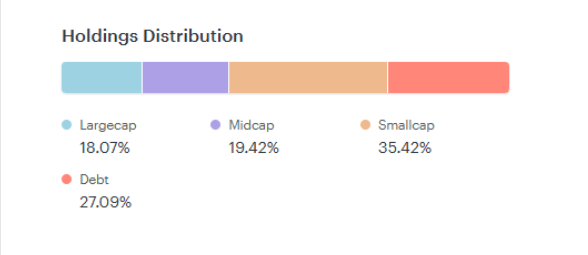Investing can be tricky, especially when it comes to choosing between large, mid, and small-cap stocks. A flexi cap strategy offers a way to navigate this challenge by spreading investments across different market capitalizations. This means there is exposure to large, mid, and small-cap stocks all at once, rather than focusing on just one. This balanced approach can help reduce risk and increase chances of long-term growth.

Avoiding Market Cap Bias
One common mistake investors make is developing a bias towards a particular segment of the market. For example, many believe that small-cap stocks may not perform well for a few years after a rally. Some might argue that large caps are the safer option and will continue to outperform. However, predicting market trends is incredibly difficult, and no one can say for sure what will happen next. Instead of trying to guess, it is better to have a diversified portfolio that includes exposure to different segments of the market.
A Balanced Approach is Key
Just like in cricket, where different players contribute at different times, investing across various market caps allows your portfolio to benefit from multiple strategies. Sometimes, large caps may perform well, while other times, small or mid-caps could take the lead. A balanced approach means you don’t rely too heavily on one part of the market. This way, your investments are not overly dependent on whether large, mid, or small caps are doing well at any given time.
Market Cycles Are Unpredictable
One of the key things to remember is that market cycles are hard to predict. While certain segments of the market may outperform for a time, there’s no guarantee that will continue. Small-cap stocks might suddenly surge, while large caps slow down. Trying to jump from one segment to another based on recent performance can be a risky strategy. It’s better to stay invested across different sectors, allowing each to perform in its own time.
Rising and Falling Markets
Even if some individual stocks are performing well, they may be impacted if their entire segment falls out of favor. For instance, mid-cap stocks that are growing well might still see a drop if the broader mid-cap market declines. On the flip side, if there’s a rush towards small-cap stocks, even weaker ones might rise simply because of market momentum. These market-wide movements are difficult to predict, which is why a more neutral stance across different market caps can be beneficial.
Stay Consistent and Avoid Extremes
When it comes to portfolio management, it’s essential to avoid shifting between extremes. Just because one segment, like large caps, has performed well doesn’t mean you should fully switch to mid or small caps expecting them to perform next. Instead, maintain a diversified approach. Adjusting your allocation based on your risk tolerance is fine, but extreme shifts can be detrimental to long-term growth.
Disclaimers and disclosures : https://tinyurl.com/2763eyaz
If you have any questions, please write to support@weekendinvesting.com













